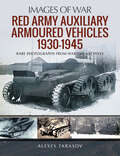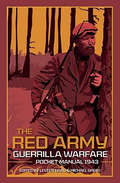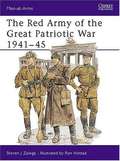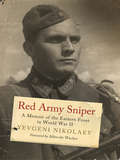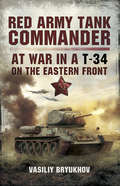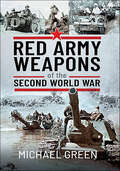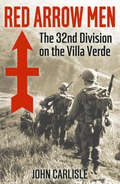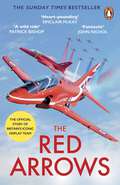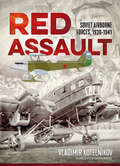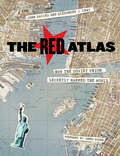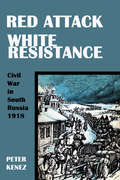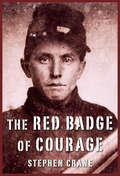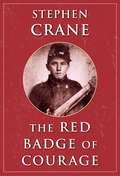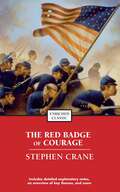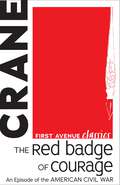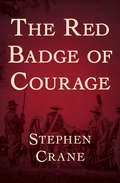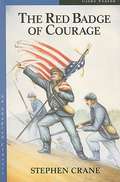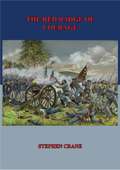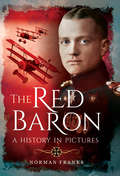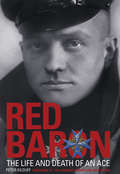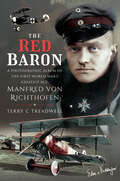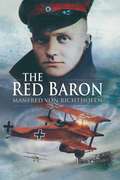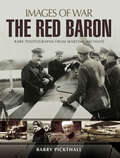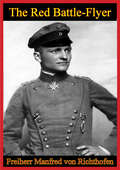- Table View
- List View
Red Army Auxiliary Armoured Vehicles, 1930–1945 (Images of War)
by Alexey TarasovDuring the 1930s in the Soviet Union a remarkable range of auxiliary armoured vehicles were produced for the Red Army which have rarely had the attention they deserve, and Alexey Tarasov’s photographic history is the ideal guide to them. These innovative designs demonstrate the diversity and innovation of the Soviet arms industry. Among them were armoured flails, ambulances, bridge-layers, flame-throwers and amphibious cars which prefigure similar designs made by western engineers during the Second World War. As this selection of rare photographs shows, Soviet designers were in many ways ahead of their time and it was short-sighted internal policy and the shortcomings of Soviet industry which led to the cancellation or postponement of many of these promising projects. As a result, when faced with Operation Barbarossa in 1941 the Red Army lacked the auxiliary armour that would have helped to stem the German advance. Alexey Tarasov’s in-depth research and the rare photographs he has assembled give a fascinating insight into a little-known aspect of the history of Soviet armoured vehicles.
The Red Army Guerrilla Warfare Pocket Manual, 1943 (The Pocket Manual Series)
by Lester GrauThe indispensable guerilla warfare manual, first developed by the Russian military during WWII—with a thorough introduction on its legendary history. During the Second World War, the Red Army developed The Partisan's Companion to train Soviet guerillas to fight Nazi invaders It contains the Soviet lessons of two bitter years of war, covering field craft, guerilla tactics, German counter-guerrilla tactics, demolitions, German and Soviet weapons, scouting, camouflage, anti-tank warfare and anti-aircraft defense for squad and platoon-level instruction. It proved so effective that it was later used to train Third World guerrillas in their wars of national liberation during the 1950s–70s, and even the Fedayeen guerrillas who fought US and coalition forces in Iraq. The Soviet partisans moved and lived clandestinely, harassed the enemy, and supported the Red Army through reconnaissance and attacks on German supply lines. They clearly frustrated German logistics and forced the Germans to periodically sideline divisions for rear-area security. The partisans and their handbook were a vital part of the eventual Soviet victory over Germany. This pocket manual puts The Partisan's Companion in context, explaining its importance.
The Red Army of the Great Patriotic War, 1941-45
by Steven J. ZalogaThe German invasion in 1941 led to a series of staggering defeats for the Russians. In the first five months of fighting, the Soviets lost about four million men, amounting to 80 per cent of the total strength of the ground forces at the time of the outbreak of the war. Yet the Red Army managed to hold on. The Soviets had been steadily growing throughout in capability and effectiveness, and after the smashing of the German offensive at the battle of the Kursk salient, they were never again seriously checked, advancing to the ruins of Berlin itself. This title examines the organisation, equipment and uniforms of the Red Army of the Great Patriotic War.
Red Army Sniper: A Memoir on the Eastern Front in World War II (Greenhill Sniper Library)
by Yevgeni Nikolaev'I did not regard myself as a slacker. Even in childhood I taught myself to carry out tasks entrusted conscientiously and carefully. In war, it is no secret that the casual don't survive'.Yevgeni Nikolaev was one of Russias leading snipers of World War II and his memoir provides and unparalleled account of front-line action in crucial theaters of war. Nikolaev is credited with a remarkable 324 kills and his wartime service included time in the siege of Leningrad in 1941/1942.His memoir is not a neutral, apolitical account. Far from it. Nikolaev asserts, for example, that Finland attacked Russia. As a member of the NKVD, it is not surprising that his memoir full of historical misinterpretation and justification of the agencys actions.Equally, Nikoalev is dismissive of his Nazi opponents. On several occasions, he discusses his Nazi counterparts as bandits and scum, and implores the reader to take a look, fellows, at the beast of a bastard Ive laid low.In vivid, arresting recollections he paints his actions in a saintly heroic light. He describes the comfort of the German foxholes, wired with telephone connections, relative to the Russians who fasted without food or water awaiting the moment for a perfect shot. He claims the Russian soldier was a moral warrior, killing only with head or heart shots.In addition to describing details of his kills, Nikolaev explains how his life was saved when an explosive rifle bullet struck a watch that he kept in his jacket pocket. His life was saved by a surgeon who extracted all the watch parts.
Red Army Tank Commander: At War in a T-34 on the Eastern Front
by Vasiliy BryukhovA vivid firsthand account of armored warfare by a WWII Soviet tank commander. What was it like to command a T-34 tank on the Eastern Front during the Second World War? How were tank operations organized and carried out, what was the actual experience of combat, and what were the qualities that made the difference between success and failure? And what were the chances of survival? Vasiliy Pavlovich Bryukhov&’s vivid, detailed, and gripping memoir of his wartime service gives a fascinating and authentic insight into these questions. It also provides an accurate, unsentimental record of the day-to-day life of a tankman whose unit fought in the forefront of the Red Army throughout the conflict across the western Soviet Union and into eastern Europe. His first-hand eyewitness account is a memorable personal story that provides a powerful insight into the reality of tank warfare seventy-five years ago.
Red Army Weapons of the Second World War
by Michael GreenWhile the Red Army’s arsenal at the start of the Second World War included weapons dating back to the Great War or earlier, the 1930s’ modernization program had introduced the automatic Tokarev pistol and self-loading Tokarev rifle. Its small arms were soon replaced by mass-produced sub-machine guns, such as the PPSh 1941, nicknamed the ‘PePeSha,’. Supplementing the submachine guns, the Degtyarev Light Machine Gun DP-27. Fitted with a circular pan magazine, it received the not-unsurprising nickname ‘Record Player.’ New mortars and towed artillery pieces, ranging from 76mm to 203mm, entered service in the pre-war years. In addition to a wide range of towed, self-propelled and anti-tank guns, the Soviets fielded the Katyusha rocket launchers in 1941, nicknamed the ‘Stalin’s organ’ by the Germans. The 1930s saw the introduction of the BT light tank series. The iconic T-34 medium tank series came into service in late 1940, joined by the IS-2 heavy tank from early 1944, the prefix letters ‘IS’ translates to Joseph Stalin. These formidable AFVs led the Red Army to victory in May 1945 over Nazi Germany. All these weapons and more are covered with numerous images in this authoritative overview of the subject.
Red Arrow Men: The 32nd Division on the Villa Verde (Combat Arms Ser. #No. 22)
by John M. CarlisleRed Arrow Men: The 32nd Division on the Villa Verde Trail, first published in 1945, is the account of 'embedded journalist' John Carlisle with the U.S. Army's 32nd Infantry Division in Luzon, Philippines, in 1945. At that time, the 32nd was engaging the Japanese on the Villa Verde Trail. It would take 119 days of fierce, close-quarters combat to advance slightly more than 20 miles over rough, jungle-covered terrain, and seize their objective of the Cagayan Valley. As author Carlisle states in the Foreword: "This was a mauling fight against the Jap in his remarkable defensive positions, against the terrain, supply and climate. In those 119 days the Red Arrow boys fought 22 miles, sometimes 35 yards at a time, with the Jap never more than 30 feet away. The division killed 9,000 Japanese and took 50 prisoners. It lost 4,226 men, about a third of the division strength." Their hard-won victory saw the surrender of Japanese General Tomoyuki Yamashita and his exhausted, starving troops. Red Arrow Men portrays these experiences from the perspective of the foot-soldier, most of whom were from Michigan, and Carlisle talked with many men (and a number of WACs and female Red Cross workers), and relates their moving stories. Of note is that in World War Two, the 32nd Division logged a total of 654 days of combat, more than any other United States Army division.
The Red Arrows: The Sunday Times Bestseller
by David MontenegroSUNDAY TIMES TOP TEN BESTSELLERDAILY MAIL BOOK OF THE WEEKTHE FIRST OFFICIAL HISTORY OF THE RED ARROWS'Heart-pounding, exhilarating . . . A fascinating testimony of jeopardy, cool heads and the sheer exultant addiction of flying.' SINCLAIR MCKAY'Fantastic . . . It was wonderful to read about so many old chums and truly legendary aviators. Highly recommended.' JOHN NICHOL (Twitter)'An exhilarating read! The next-best thing to taking the controls of a Hawk fast-jet. And you're much less likely to throw up.' BEN MILLER'Inspirational . . . Precision, style and dedication. The Red Arrows are the ultimate in teamwork.' TIM PEAKE'Perfectly enjoyable . . . As the Red Arrows head towards their 60th anniversary, it's clear the team's place in our hearts is secure.' DAILY MAIL'A wild ride . . . The ultimate insider guide, relating with great enthusiasm and insight what it means to be inside the cockpit as you scream through the skies at 350 to 450 miles per hour, within what feels like touching distance of your wingman, making continual nanosecond decisions that will result in certain death if you get them wrong.' TELEGRAPH, Patrick Bishop_________________________________________"Occasionally, you and the team come within read of perfection, up there in the rarefied air of the skies. You never know when those moments will come, but it's what you yearn for as a pilot."The Red Arrows represent the very best speed, agility and precision aerobatic flying in the Royal Air Force, and the people who wear those iconic red flight suits are rigorously selected not just for their flying skills, lightning-fast reflexes and nerves of steel, but for their mental resilience, courage and humility.Written by the Officer Commanding and former Red 1 Team Leader, Wing Commander David Montenegro, and full of never-before-shared tales from pilots past and present, this thrilling history is both a faithful record and a fascinating account of not only what it takes, but what it means, to be a Red Arrow._________________________________________Praise for the Red Arrows:'A lifetime's ambition . . . I still can't believe I've been in a fighter jet. It was fantastic - just to feel the G-force was spectacular.' LEWIS HAMILTON'So tight, crisp and professional' CHRIS HADFIELD'I can never quite believe that anyone can fly and aircraft with such precision' PROF. BRIAN COX'The skill level they have is just off the scale. The Red Arrows is an amazing display of quality' DAVID COULTHARD
Red Assault: Soviet Airborne Forces, 1930–1941 (Savas Beatie Orders of Battle Series)
by Vladimir KotelnikovIn the 1930s Red Army Command maintained what was often an offensive doctrine. The plan was to fight a bloodless victory on foreign ground. An offensive by the Worker's and Peasant's Red Army was to unfold as per the classic Blitzkrieg - it was with good reason that some of the higher ranking commanders had studied at the German General Headquarters Academy. Furthermore all the technical achievements of the period were taken into account. The assault would begin with air strikes from strategic aviation: armadas of huge bombers would attack key targets deep inside enemy territory. At the same time enormous numbers of airborne troops would be dropped behind enemy lines, armed with a range of equipment. These airborne troops would capture bridges, and roads, and take communications, and transport links out of action. Heralded by a powerful artillery attack, supported by tactical aviation the tanks, armored vehicles, and trucks carrying motorized infantry would advance. There was a basis for such optimistic forecasts. Since the Soviets were in possession of such a quantitative, and qualitative advantage (and this was certainly the case) they were definitely able to advance. In the USSR aviation was undergoing development ahead of schedule, as were armored tank technology, airborne assault troops, and chemical weapons. If the Soviets had tanks, aircraft, and chemical weapons, albeit in small quantities, any potential enemies would possess them too. The airborne assault troops however were a distinctly Soviet innovation. In this respect it was the Soviets that held an unquestionable advantage. It was here that the first groups of airborne paratroopers were dropped, and the first tanks and guns were dropped from the skies. The Red Army was conducting mass airborne assault operations during the course of exercises when no other nation on Earth had airborne assault troops. In other field’s Soviet military science and technology in many cases copied existing Western achievements. Licenses were obtained, or examples of foreign materiel were simply copied. As far as the airborne troops were concerned the Soviet military, and the designers were in unchartered territory, having come up with a number of innovative solutions, which were later adopted by the armed forces of other nations. In this book the armament, equipment, and military hardware developed for airborne troops is described, both in terms of the actual technology, and the clearly fantastical, which only reflected the unrestrained imagination of the designers. A significant amount of attention is devoted to the aircraft, from which it was planned airborne troops would be dropped. The exercises that saw airborne troop drops are described, as well as the role airborne troops played in actual operations in the period up to 1941. This book has been written on the basis of a number of documents that the author has discovered in the archives, and in museum collections. This work draws upon the memoirs of the pioneer military paratroopers in the USSR, some of which have never been published before.
The Red Atlas: How the Soviet Union Secretly Mapped the World
by James Risen John Davies Alexander J. KentNearly thirty years after the end of the Cold War, its legacy and the accompanying Russian-American tension continues to loom large. Russia’s access to detailed information on the United States and its allies may not seem so shocking in this day of data clouds and leaks, but long before we had satellite imagery of any neighborhood at a finger’s reach, the amount the Soviet government knew about your family’s city, street, and even your home would astonish you. Revealing how this was possible, The Red Atlas is the never-before-told story of the most comprehensive mapping endeavor in history and the surprising maps that resulted. From 1950 to 1990, the Soviet Army conducted a global topographic mapping program, creating large-scale maps for much of the world that included a diversity of detail that would have supported a full range of military planning. For big cities like New York, DC, and London to towns like Pontiac, MI and Galveston, TX, the Soviets gathered enough information to create street-level maps. What they chose to include on these maps can seem obvious like locations of factories and ports, or more surprising, such as building heights, road widths, and bridge capacities. Some of the detail suggests early satellite technology, while other specifics, like detailed depictions of depths and channels around rivers and harbors, could only have been gained by actual Soviet feet on the ground. The Red Atlas includes over 350 extracts from these incredible Cold War maps, exploring their provenance and cartographic techniques as well as what they can tell us about their makers and the Soviet initiatives that were going on all around us. A fantastic historical document of an era that sometimes seems less distant, The Red Atlas offers an uncanny view of the world through the eyes of Soviet strategists and spies.
Red Attack, White Resistance: Civil War in South Russia, 1918
by Peter KenezThe first of a two-volume history and analysis of the Russian Civil War, this volume covers events in 1918.“The republication of Professor Kenez’s classic volumes is to be warmly welcomed. Based on copious archival research and a close reading of published memoirs and mixing careful narrative with judicious analysis, they still provide the definitive history of the anti-Bolshevik movement in South Russia. Their original publication provided an inspiration for a generation of scholars of the Russian Civil War; the new edition will certainly inspire another. The armchair historian too, as well as all those interested in the fate of contemporary Russia, will find much to admire and much to ponder upon in this well told tale of one of the most bloody and tragic episodes in recent European history.” —Jonathan D. Smele, University of London “The profession will be delighted to learn that this classic study of the Russian Civil War (1917-21) on its most crucial battleground is again available. Kenez’s work was the first in any language to cut through the rhetoric of partisan memory and historiography in order to present a complicated and balanced view of both sides. While demythologizing Soviet historical explanations, Kenez is especially keen in displaying the enormous variety of the “White,” or anti-Communist, movement and analyzing the causes of its defeat.” —Richard Stites, Georgetown University
The Red Badge of Courage: An Episode Of The American Civil War...
by Stephen CraneThe Red Badge of Courage is the fictionalized account of a Union soldier's life in the American Civil War. It recounts the experiences of lowly private Henry Fleming, who dreams of honour won on the battlefield. His illusions are undone however, when he comes face to face with the horrors of war. Stephen Crane's classic is, with the possible exception of Gone With the Wind, the best-known of all civil war novels.Sayre Street Books offers the world's greatest literature in easy to navigate, beautifully designed digital editions.
The Red Badge of Courage: An Episode Of The American Civil War...
by Stephen CraneThe Red Badge of Courage is the fictionalized account of a Union soldier's life in the American Civil War. It recounts the experiences of lowly private Henry Fleming, who dreams of honour won on the battlefield. His illusions are undone however, when he comes face to face with the horrors of war. Stephen Crane's classic is, with the possible exception of Gone With the Wind, the best-known of all civil war novels.Sayre Street Books offers the world's greatest literature in easy to navigate, beautifully designed digital editions.
The Red Badge of Courage: Assessment Manual (Enriched Classics)
by Stephen CraneEnriched Classics offer readers accessible editions of great works of literature enhanced by helpful notes and commentary. Each book includes educational tools alongside the text, enabling students and readers alike to gain a deeper and more developed understanding of the writer and their work.The Red Badge of Courage is a powerful tale of the American Civil War. The book has garnered international acclaim for its realism and psychological depth in telling the story of a young soldier and his reaction to the horrors of war. Enriched Classics enhance your engagement by introducing and explaining the historical and cultural significance of the work, the author’s personal history, and what impact this book had on subsequent scholarship. Each book includes discussion questions that help clarify and reinforce major themes and reading recommendations for further research. Read with confidence.
The Red Badge of Courage: An Episode of the American Civil War (First Avenue Classics ™)
by Stephen CraneDrawn by visions of glory on the battlefield, Henry Fleming joins the Union Army to fight the Confederates. But his dreams of valor are outweighed by his fear, and after one battle, Harry runs away. As he runs, he meets several wounded men whose "red badges of courage" make him even more ashamed of his cowardice. Henry returns to the front line and, inspired by the men who sacrificed their limbs and lives, fights with a passion he never knew he had. This is an unabridged version of the classic Civil War novel by American author Stephen Crane, first published in 1895.
The Red Badge of Courage: An Episode Of The American Civil War
by Stephen CraneThe finest novel of the Civil War, and one of the greatest battle stories ever toldThe question of courage enters Henry Fleming&’s mind the moment he dons the blue uniform of the Union Army. But his first firefight reveals the emptiness of words such as bravery and fear. Pinned in by his comrades, he can only fire his rifle like a cog in a machine. There is no chance to run.Then comes the true test. Waking from a nap, Henry sees the enemy advancing once again. Gripped by an unshakable terror, he flees—from his regiment, from duty, from everything he wanted to believe about himself. A corpse bears witness to his shame.The nightmare has come true. Henry Fleming is a coward. Only one thing can save him now: a visible wound, the red badge of courage. With his regiment&’s colors in hand, Henry looks the enemy in the eye—and charges.Stephen Crane was born six years after Lee&’s surrender at Appomattox and had yet to see a battlefield when he wrote The Red Badge of Courage. Nevertheless, the novel is widely regarded as one of the most realistic depictions of war ever published, and a masterpiece of American literature.This ebook has been professionally proofread to ensure accuracy and readability on all devices.
The Red Badge of Courage (An Adapted Classic)
by Stephen CraneThe story of one young man's experience during the Civil War. This version is adapted for easier reading. There is a study guide at the end. Note that there are errors in the original book, especially in the Table Contents (Chapter 17 is listed twice. The second one is really Chapter 19.)
The Red Badge of Courage and "The Veteran": An Episode of the American Civil War
by Stephen CraneAn account of the brutal and terrifying nature of war zone, during the great Civil war, narrated through the eyes of a young soldier.
Red Badge of Courage [Illustrated Edition]
by Stephen CraneIncludes Civil War Map and Illustrations Pack - 224 battle plans, campaign maps and detailed analyses of actions spanning the entire period of hostilities.Few novels written of the Civil War stand in such high regard as the Red Badge of Courage, the visceral, realistic and gripping story of Henry, a new recruit in the Union Army. Henry's first taste of battle is brutal and horrifying as he fails at the first hurdle and baulks at the severity of combat and runs. After the realization of what he had done, he is driven to atone for his failure by facing his fears of the battle-line once again, hoping to receive a "Red Badge of Courage" as a mark of conquering his fears.A Classic, with many additional illustrations.Author -- Crane, Stephen, 1871-1900.Text taken, whole and complete, from the edition published in New York, D. Appleton and company, 1927. Original Page Count - xli and 266 pages.
The Red Baron: A History in Pictures
by Norman FranksA pictorial history of the infamous German World War I air force pilot, by the author of Dieppe: The Greatest Air Battle. There are numerous books covering the life of Rittmeister Manfred Freiherr von Richthofen, and he has remained at the forefront of World War I studies. In commemoration of one hundred years since the beginning of the war, author Norman Franks introduces a new collection of photographs covering the entire span of von Richthofen&’s war (most of which will have been seen but spread over a variety of literature about First World War flying), consolidated in one book. In the time since the release of Franks earlier titles on a similar theme, a constant trickle of new information has filtered down to him. Although none of it specifically challenges the conclusions drawn in earlier publications, in consolidating them here, he&’s been able to preserve some significant notes of interest. Following several visits to Belgium and Northern France, Franks has managed to acquire additional images, illustrating the places in which the Red Baron lived and fought between 1916 and 1918. This collection covers the entire span of von Richthofen&’s recorded history in pictures, some new and lesser known, some iconic and widely circulated, and all housed here under one roof for the very first time.&“If you are a Red Baron fan, this book is a must-have. Even if you are new to the topic, the text provides an excellent introduction to his career.&” —The Miniatures Page&“In summation, The Red Baron: A History in Pictures is recommended.&” —Over the Front
Red Baron: The Life And Death Of An Ace
by Peter KilduffManfred Freiherr von Richthofen, the Red Baron, was the most successful fighter pilot of World War I, shooting down 80 enemy airplanes and receiving more high decorations than any other German combatant.In Red Baron: The Life and Death of an Ace, Peter Kilduff tells the story of this courageous and charismatic man: his comrades and enemies, the planes he flew, the battles he fought in, the political climate that caused his eventual disenchantment and the controversial circumstances of his death.Containing previously unpublished photographs, drawings on new source material from former East German state archives and making fresh insights into existing sources, Red Baron is the most up-to-date reference on the life of a legend.
The Red Baron: A Photographic Album of the First World War's Greatest Ace, Manfred von Richthofen
by Terry C. TreadwellIf one aircraft was to represent the First World War, it could be the distinctive red Fokker Triplane of Manfred von Richthofen. With an astonishing eighty aerial victories, the Red Baron became a legend in his own, short, lifetime. Regarded as one of the most widely known fighter pilots of all time, von Richthofen is also considered to be the First World War’s ‘ace-of-aces’. While much is known about this German aristocrat, what this book accomplishes is a pictorial portrait of von Richthofen as has never been seen before. Through a unique collection of photographs, the life of this famous airman is laid bare. From early family photographs through to the First World War, and his initial service as a cavalry reconnaissance officer on both the Eastern and Western fronts, his flying career, and the aircraft he flew, this extensive collection provides an unrivaled window into the life of history’s most celebrated fighter pilot. By 1918, von Richthofen was regarded as a national hero in Germany and respected by his enemies. However, his remarkable career came to an abrupt conclusion on 21 April 1918. Just as the German Spring Offensive was faltering, von Richthofen’s aerial armada took to the sky to engage the Sopwith Camels of 209 Squadron which had taken off to undertake an offensive patrol over the Somme. In the ensuing dogfight, von Richtofen pursued one of the Camels along the valley of the River Somme. As he crossed the Allied line he came under fire – both from the ground and from the air. Von Richtofen was fatally wounded by a single bullet which damaged his heart and lungs. Just which Allied pilot, or indeed soldier, fired the fatal shot remains in contention. Images of the stripped wreckage of his famous Fokker Triplane add a solemn, and all too graphic, coda to the life of the Red Baron.
The Red Baron: The Autobiography Of Manfred Von Richthofen
by Manfred von RichthofenManfred von Richthofen - the Red Baron - was the most celebrated fighter pilot of the First World War, and was holder of the Blue Max, Pour le Mrite, Germany's highest military decoration. He was credited with 80 victories in the air, before being shot down in disputed circumstances aged 26. In this autobiography Richthofen tells not only his own story but also that of his contemporaries, their duels in the sky, ever present danger, fame, honour and spiralling death.
The Red Baron: Rare Photographs from Wartime Archives (Images of War)
by Barry PickthallBeginning his wartime career on the Western Front in August 1916, Manfred von Richthofen, or the Red Baron as he became known, had shot down an impressive total of fifteen aircraft by January 1917, as well as being appointed commander of his own unit. By the time of his death in 1918, he had destroyed a staggering total of eighty allied aircraft. From the perspective of the allies, he was a deadly menace. For the Germans, he was a fighter pilot hero of legendary significance. This fascinating collection of rare images offers a fresh perspective on the Baron himself, as well as a number of his adversaries from the Allied side of the line.
The Red Battle Flyer [Illustrated Edition]
by Freiherr Manfred von RichthofenIncludes Aerial Warfare During World War I Illustrations Pack with 115 maps, plans, and photos.The famous battle memoirs of the Red Baron.The Red Battle-Flyer, or Red Fighter Pilot, (German: Der Rote Kampfflieger) is a book written by Manfred von Richthofen, the most famous German fighter pilot ace. During his time over the Western Front he achieved eighty air combat victories, making him the top-scoring fighter pilot of the First World War.The book details some of Richthofen's experiences during World War I. He finished the book in 1917 during a convalescence from wounds, and as it was written during the World War I, it was subjected to war-time censorship. He would fight on wreaking havoc among Allied airmen until 1918 when he was finally downed, the final vanquisher of the famous Red Baron is still disputed but seems that he met his end from ground fire.
